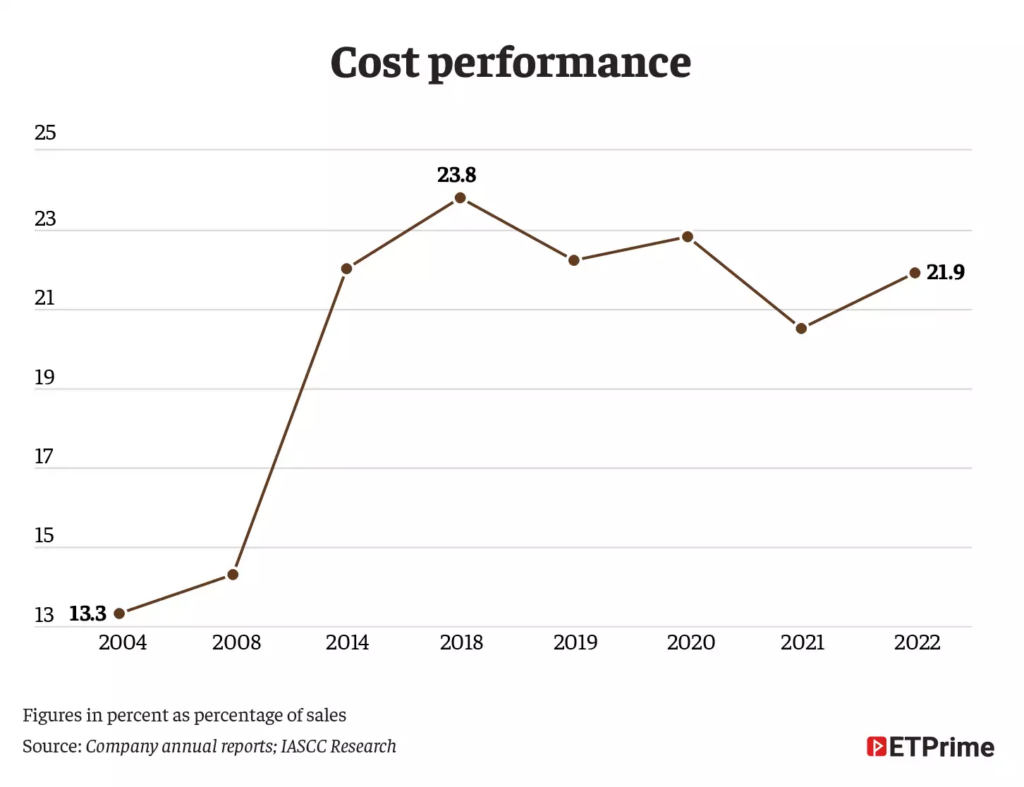During my Executive MBA lecture today, a thought-provoking question from our professor struck a chord. He asked, “How many of you walk into a supermarket and analyze biscuits in terms of their management, pricing, quantity, and the strategy behind them?”
That simple question left me intrigued. Imagine viewing something as ordinary as a biscuit aisle through the lens of a management student—it suddenly transforms into a fascinating case study. From understanding pricing strategies to decoding consumer behavior, the humble biscuit could reveal layers of business insights.
It got me thinking: could this seemingly trivial exercise actually be a goldmine for management enthusiasts? Spoiler alert—it absolutely can!
Parle-G

First Let’s take a bite out of one of India’s most fascinating business success stories—Parle-G. This humble biscuit has been a staple in our homes for generations, dunked in chai, crumbled in milk, or just munched on the go. But what’s truly remarkable is how Parle-G has kept its iconic ₹5 and ₹10 price tags untouched for over 50 years. Seriously, in a world where even onions can give you a heart attack with their prices, how on earth does Parle-G pull this off? Let’s break it down.
Parle-G’s pricing strategy is nothing short of genius, blending operational excellence with a psychological masterstroke that has kept its iconic small packet affordable for decades. As shared by Prakash on LinkedIn, the story of how a ₹4 packet in 1994 remained at that price for nearly three decades—and even today costs just ₹5—deserves a deep dive.
The Power of Perception
Let’s start with the clever psychological hack that Parle-G mastered. When you think of a “small packet,” what comes to mind? For most of us, it’s a packet that neatly fits in our hand and contains just enough biscuits for a quick snack. Parle understood this perception inside out and capitalized on it.
Instead of raising prices over the years, which could have alienated cost-conscious consumers, they did something much smarter: they subtly reduced the weight of the packet while maintaining its visual and physical appeal. This tactic preserved the perception of value without sparking outrage over price hikes.
The Shrinking Packet: A Timeline
Here’s how Parle-G executed this strategy over the years:
- 1994: The “small packet” weighed 100 grams and cost ₹4.
- Gradual Adjustments: Over the years, the weight decreased incrementally—92.5 grams, then 88 grams, and so on.
- Today: The current ₹5 small packet weighs just 55 grams, a staggering 45% reduction in weight compared to 1994.
Yet, because the packet still looks and feels like the small, familiar pack we grew up with, most consumers barely notice the difference.
Operational Optimizations at Play
Of course, this psychological hack wouldn’t work without Parle’s razor-sharp operational efficiencies:
- Cost Control: From sourcing raw materials locally to optimizing supply chains, Parle minimized production costs at every step.
- Economies of Scale: By producing at massive volumes, they reduced per-unit costs, allowing them to absorb inflation without dramatic price increases.
- Packaging Consistency: Keeping the iconic yellow-and-white design consistent over the decades reinforced the product’s identity and trustworthiness, ensuring that consumers wouldn’t scrutinize changes too closely.
The Genius of Shrinkflation
Parle-G’s strategy is a textbook example of shrinkflation—the practice of reducing product size while keeping the price constant. It’s a move many FMCG companies use, but Parle-G’s execution stands out because of its subtlety and its alignment with consumer perceptions. By shrinking the weight in small, almost imperceptible increments, Parle-G ensured that its biscuits remained a go-to snack for families across India.
Lessons in Consumer Psychology
For businesses and management enthusiasts, this is a masterclass in understanding your audience:
- Value Perception Matters: Parle knew that as long as the packet looked and felt the same, most consumers wouldn’t measure the grams or feel cheated.
- Small Changes, Big Impact: By making incremental changes over time, Parle avoided the backlash that a sudden price hike or drastic reduction in size could have triggered.
- Consistency Builds Loyalty: Through all these changes, Parle-G has remained consistent in taste, packaging, and brand positioning, ensuring it stays a trusted name across generations.

Current Market of Biscuits:
soon